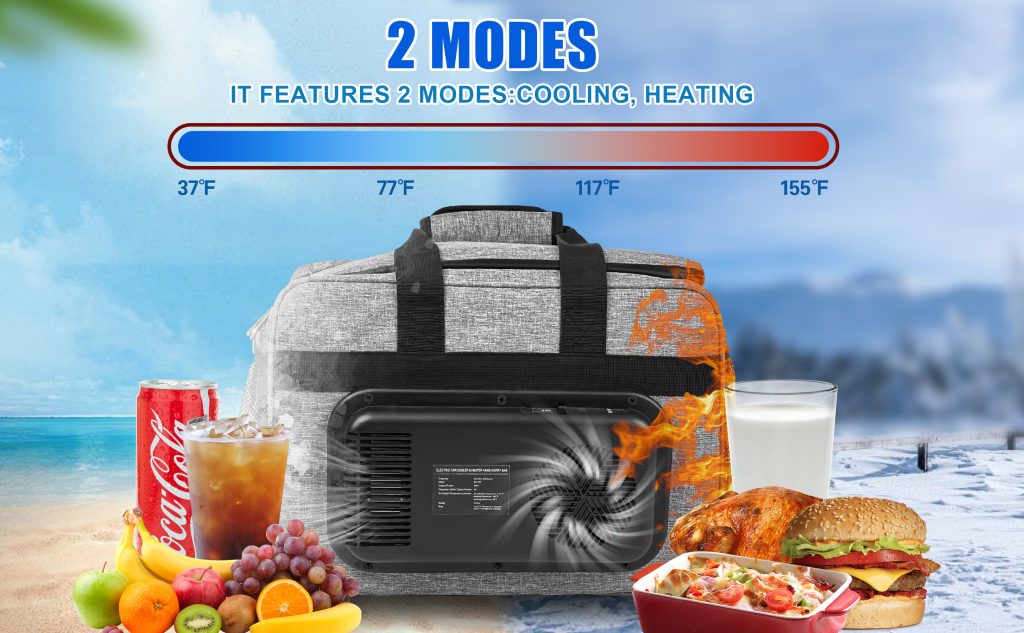
As soon as the weekend arrives, many people’s cars enter “full load mode” : baby strollers, camping chairs, suitcases, and purchased fresh produce are piled up layer upon layer. To be able to enjoy cold drinks and preserve dairy products during the journey, many families will place a traditional car refrigerator in the trunk. But the reality is often that it is like a “permanent large item”, taking up loading space. When it is actually needed, people have to get out of the car, open the box and return to their seats. Whether it’s a drink of water or fetching fruit for a child, it’s like doing a “round-trip run”. The path for picking up items is elongated, small demands are magnified into big actions, and the frequency of use naturally decreases.
This is not about who used it wrongly, but rather that form determines experience. Due to the limitations of compressors and structures, traditional car refrigerators are bound to be less portable in terms of volume and weight. For ventilation and power supply, it is mostly fixed in the trunk, which is inconvenient to access. In addition, the cable routing is restricted and the posture for opening the cover is awkward. Many times, “people have to revolve around the equipment” rather than the equipment revolving around people. Long-distance self-driving is fine, but I can barely accept “stationing”. For daily short trips and urban shopping, it appears cumbersome and infrequent.
The Borcellana car heating and cooling package has fundamentally changed this logic – it has transformed the “refrigerator” into a “package”. When empty, it becomes thin with a single fold and won’t take up much space when stuffed behind a seat, in the gap of a floor or in a cabinet at home. When loading, just pick it up and go, as convenient as a sports bag. Because of its light weight, it can be placed in multiple locations inside the vehicle: in the corner of the trunk, between the rear seats, and in front of the front passenger seat, flexibly adjusting according to the current seating and luggage layout. The nearby access ensures that the movement chain is not broken and the rhythm inside the vehicle is not disrupted, truly achieving the goal of “the moment you need it is right beside you”.
The freedom of placement directly alters the details of the journey. When the family goes out, place the refrigerated bag in the middle of the back seat or in the gap at the feet. Parents can reach out their hands to get their children’s yogurt, fruits and ice packs. When two people drive by themselves, place it in front of the passenger seat or between the seat and the center console. Both the driver and the passenger can easily replenish water with just a stretch of their hand. When it is necessary to expand the loading capacity, it can still neatly lean against the side wall of the trunk, without piling up the goods or getting in the way.
For long-distance summer trips, it is a mobile cold storage cabinet. It is also a small “warm station” for winter commuting. In cold mode, line up iced coffee, cold-brewed tea and salt-replenishing drinks, and replenish them casually during the drive. The warm mode can maintain the warm state of lunch boxes and thermos cups, so that children’s warm milk and family members’ hot soup no longer need to be heated by stopping the car. It can handle both cold and hot water throughout the four seasons, reducing the redundancy of carrying multiple devices.
Many people are concerned: What specific scenarios can it actually solve? Let’s first take a look at the “Vegetable Stockpiling Day”. When going to a supermarket or a fresh food market, seafood, frozen dumplings and ice cream are the most feared to melt. Just put them directly into the refrigerated bag, and you won’t have to worry about water seepage or spoilage on your way home. Park at the community, carry a bag upstairs, save one round trip, and efficiency will be immediately improved. Let’s take a look at “parent-child camping”. Milk powder, complementary foods and small snacks that have been transferred from room temperature to refrigeration should be sorted and packed. When children want to eat, parents do not need to get out of the car and do not need to interrupt the process inside the vehicle. When we arrived at the camp, we carried the entire bag under the sky, providing one-stop supplies. The last one is “Summer Long-distance Travel”. Iced coffee, cold-brewed tea, salt-replenished beverages and cooling ice packs are lined up beside the passenger seat, waiting. During the driving journey, there is no need to “work across areas”, experiencing the transition from multiple steps to one step.
The next time you go on a self-driving trip, go camping or stock up on vegetables, you might as well try leaving the refrigeration to it. Keep the coolness at hand and let the space return to the carriage. When the path to retrieve items is no longer elongated, the sense of ease during the journey will follow like a shadow.